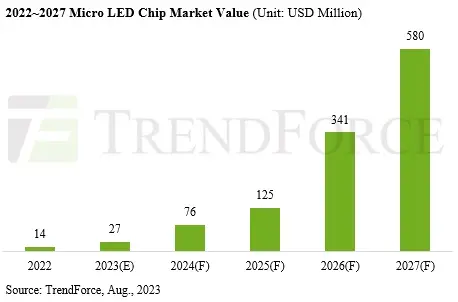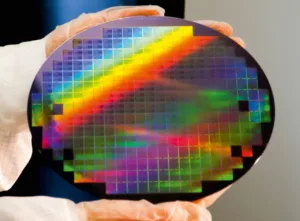The MicroLED market is experiencing a significant expansion due to the mass production of large displays and wearable devices, but from a small base today. According to TrendForce, the market value of MicroLED chips is predicted to reach $27 million in 2023, showcasing a year-on-year growth of 92%. This growth trajectory is expected to continue, with projections indicating that the market will approach $580 million by 2027. That’s a compound annual growth rate (CAGR) of approximately 136% from 2022 to 2027. This substantial growth is also impacting ancillary industries, such as transfer and testing equipment, backplanes, and integrated circuits, all poised for synchronous expansion.

Activity around MicroLED products has been significant this year. Samsung recently unveiled an 89-inch 4K display and plans to introduce even larger models, including 101-inch and 114-inch variants. Likewise, LG is preparing for mass production of its 136-inch 4K model. This involves using a larger 22.3-inch backplane and cost-effective 16×27µm chips, with plans for deployment by the end of 2023.
Leading panel manufacturer BOE has successfully launched its P0.9 active matrix display in the second quarter of 2023, with the P0.51 active matrix display set for release in the fourth quarter. BOE intends to introduce a comprehensive turnkey solution in 2024. AUO, which has shifted from its traditional LCD operations to produce the world’s first 1.39-inch MicroLED watch panel. While the rollout of a 2.12-inch MicroLED for the Apple Watch has been deferred from 2025 to 2026 due to supply chain adjustments, Apple’s supply chain is prepping for production. Greater integration of MicroLEDs into Apple products is anticipated in the next three years.
As for the automotive market, it has high demands for reliability and brightness in dashboard displays, head-up displays, and transparent screens. Any meaningful market for automotive MicroLEDs may not materialize until after 2026 due to the rigorous verification processes and certifications required. However, MicroLED is making its mark in the realm of augmented reality (AR) headsets, competing with technologies like LCOS, Micro OLED, and LBS.

